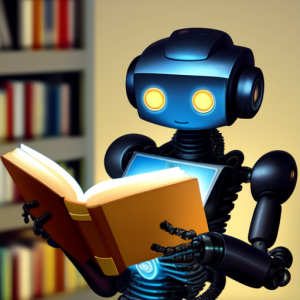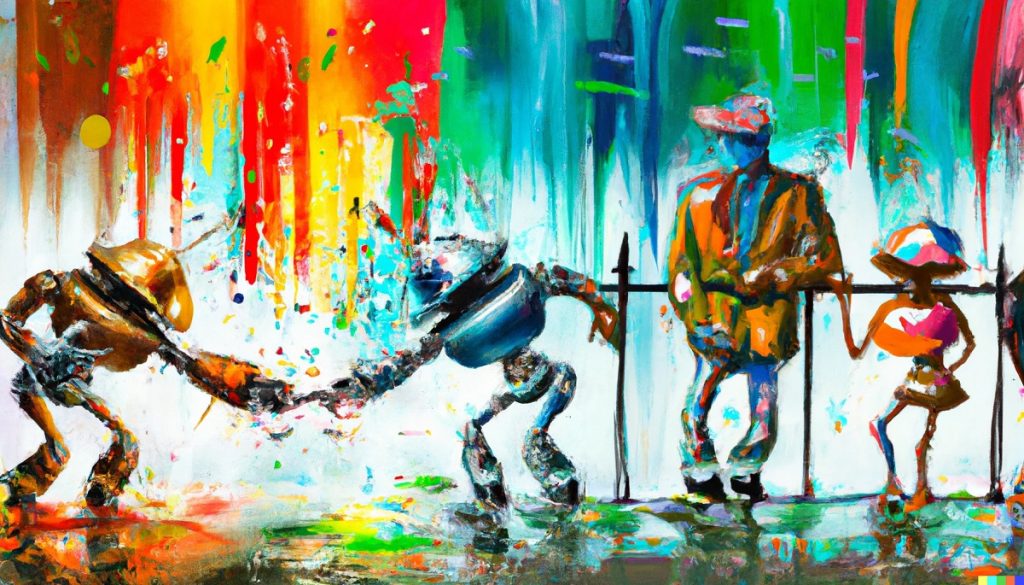Response from Chat GPT:
1. Data Collection
- Recording Your Voice: You need a significant amount of audio recordings of your voice. Speak clearly and in a neutral tone. The recordings should cover a wide range of sounds and intonations in Tamil.
- Transcription: Each audio recording must be accurately transcribed. The text should match the spoken content exactly.
2. Data Preparation
- Audio Segmentation: Split the audio into smaller segments, each corresponding to a single phonetic or word from your transcriptions.
- Normalization: Ensure the audio is normalized in terms of volume and speed.
- Data Cleaning: Remove any background noise and ensure the audio quality is consistent.
3. Model Selection
- Research: Look into existing TTS models. Tacotron 2 and WaveNet are popular choices but require substantial computational resources.
- Customization: Decide if you will modify an existing model or build one from scratch. Modifying an existing model is generally more feasible.
4. Model Training
- Environment Setup: Set up a machine learning environment with necessary libraries (like TensorFlow, PyTorch).
- Feeding Data: Input your audio data and corresponding transcriptions into the model.
- Training: Train the model until it can generate speech that closely resembles your voice.
5. Model Testing and Refinement
- Testing: Test the model with new text inputs to see how well it generates speech in Tamil using your voice.
- Refinement: Based on test results, refine the model for better accuracy and naturalness.
6. Implementation
- Integration: Embed the trained model into an application or service where it can receive text input and output speech.
- API Development: If you want to access your TTS system remotely or from different applications, develop an API.
7. Maintenance
- Updates: Regularly update the model with new data to improve or maintain its performance.
- Monitoring: Continuously monitor the system’s performance and make necessary adjustments.
This is a simplified overview. Each step involves complex processes and decisions. Depending on your expertise and the resources available, you might want to collaborate with experts in AI, linguistics, and software development. Additionally, consider the ethical implications and privacy concerns of using and sharing voice data.
Response From Gemini:
Building an AI-based Text-to-Speech system with your own voice in Tamil from scratch is a very complex undertaking. It requires expertise in machine learning, speech processing, and significant computational resources.
However, there are some services that can get you close to what you want without needing to build the entire system yourself. Here are two options to consider:
- Cloud-Based Services with Custom Voice Capabilities:
Several services offer custom voice creation for their Text-to-Speech (TTS) systems. Here are a few that support Tamil:
These services allow you to record a significant amount of high-quality speech data (hours of reading various texts) and use it to train a model that replicates your voice. While not perfect, it can generate speech that sounds much closer to your own voice than a standard TTS option.
- Simple Text-to-Speech with Tamil Voices:
If the custom voice creation is out of your needs or budget, there are services that offer pre-built Tamil TTS voices:
- Resemble AI https://www.resemble.ai/tamil-tts/
- Dubverse https://dubverse.ai/text-to-speech/tamil/
- Speechify https://speechify.com/social-media-voice-generator/tamil/
These services provide access to various Tamil voices, some with more natural-sounding options than others. You can experiment with these to find a voice that suits your needs.
Here are some additional things to consider:
- Data Quality: The quality of your custom voice (if you choose that route) will depend heavily on the quality and quantity of the speech data you provide for training.
- Computational Resources: Training a custom voice model requires significant processing power, which these cloud services provide but may come at a cost.
- Naturalness: Even the best custom voice models may not achieve perfect naturalness, but they can still come close to replicating your voice.
Remember, while building a custom TTS system from scratch is a complex task, these services can provide a way to achieve text-to-speech with a Tamil voice that closely resembles your own.
Thanks, but I want to make it from scratch using my coding knowledge
I understand your desire to build a custom Tamil TTS system from scratch. It’s an ambitious project, but with strong coding skills and the right resources, it’s achievable. Here’s a breakdown of the steps involved:
1. Data Collection:
- You’ll need a large amount of high-quality audio recordings of your voice reading various texts. This should include diverse sentence structures, vocabulary, and emotions. Aim for hours of recordings.
2. Preprocessing:
- Segment your recordings into smaller units like phonemes (basic units of sound in Tamil).
- Label each phoneme with its corresponding text character.
- Clean the audio data by removing background noise and ensuring consistent volume.
3. Feature Extraction:
- Extract features from the audio data that represent the characteristics of your voice. These could include pitch, Mel-Frequency Cepstral Coefficients (MFCCs), and formants.
4. Model Selection and Training:
- Choose a machine learning model suitable for text-to-speech generation. Popular options include WaveNet, Tacotron, or DeepVoice.
- Train the model on your preprocessed data, feeding it text and corresponding audio features.
- The model learns to map text features to audio features, essentially replicating your voice characteristics.
5. Text Normalization (Optional):
- Implement a text normalization module to handle text variations like punctuation, numbers, and special characters before feeding it to the model.
6. Inference:
- Once trained, the model can be used for Text-to-Speech generation.
- You’ll provide text input, and the model will generate audio that sounds like you speaking the text.
Resources to Get You Started:
- Speech Processing Libraries:
- Librosa (Python): https://librosa.org/doc/
- Machine Learning Frameworks:
- TensorFlow (Python): https://www.tensorflow.org/
- PyTorch (Python): https://pytorch.org/
- Datasets:
- You can search for publicly available Tamil speech datasets for training and testing purposes.
Additional Considerations:
- This process requires advanced knowledge of machine learning, speech processing, and deep learning algorithms.
- Significant computational resources (powerful GPUs) are recommended for efficient training.
- Debugging and optimizing the model for natural-sounding speech can be challenging.
Building a custom Tamil TTS system is a complex project. While these resources provide a starting point, be prepared for a long and challenging journey. If you’re new to these areas, consider starting with simpler machine learning projects to build your foundation before tackling this ambitious endeavor.




